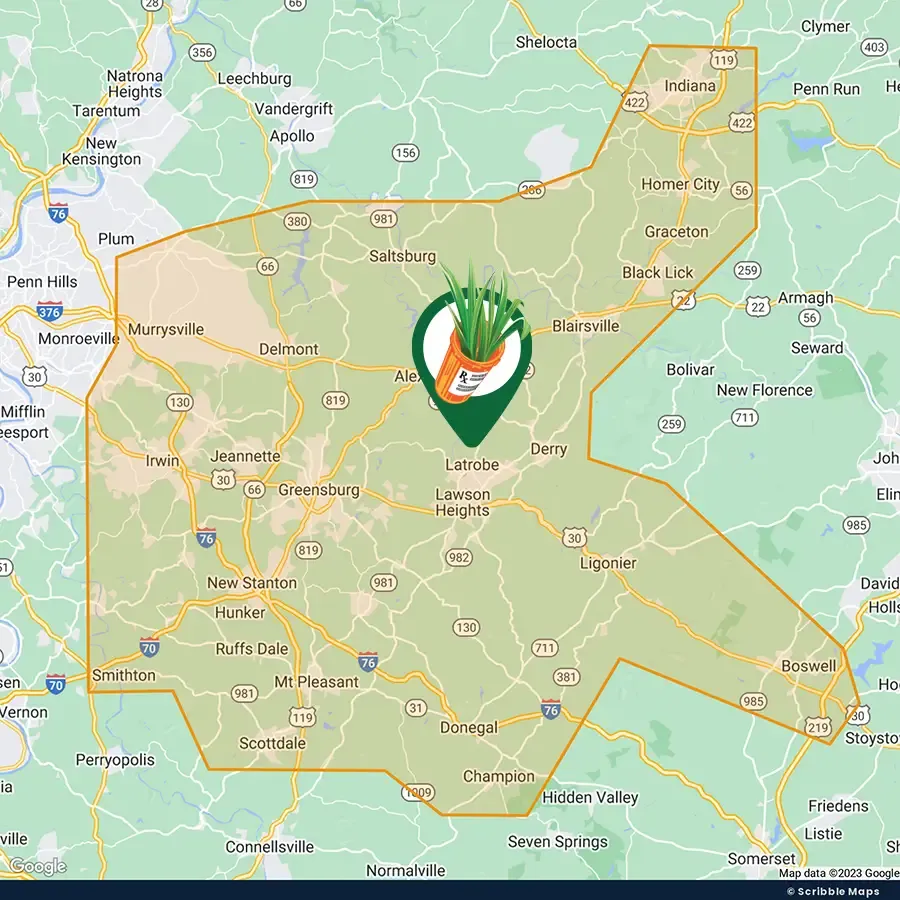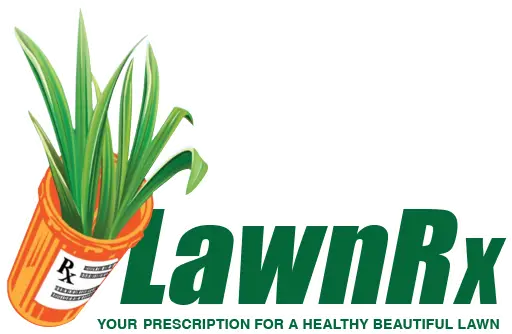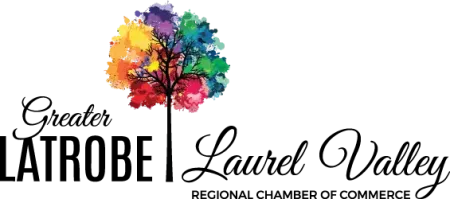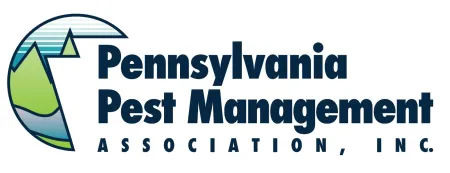Lawn Care in Pennsylvania
At LawnRx, we know lawns. As a locally and family-owned Latrobe business, our team of professionals understand our region’s unique growing conditions, unpredictable weather patterns, and property needs. Since 2004, we have been using our unparalleled experience and insight to develop custom lawn care solutions that revitalize and maintain healthy, green lawns with long-lasting results.
Comprehensive Five-Step Lawn Care Program
LawnRx offers a complete, comprehensive lawn care program designed to create and maintain a healthy, thick, weed-free lawn. Our Five-Step Lawn Care Program will give your Latrobe lawn the nutrition it needs at specific times of the year while also preventing and destroying irritating weeds. Our five applications begin in the early spring as soon as our Pennsylvania weather will allow for and includes the following:
Early Spring
Your lawn will receive the balanced fertilizer it needs to rejuvenate after a long winter and crabgrass control that will stop the crabgrass before it germinates. Weed control is also applied if weather conditions permit.
Late Spring
Your lawn will receive a balanced fertilizer and liquid weed control to keep the blooming weeds at bay. We also apply a second treatment of crabgrass control to extend your crabgrass protection. Preventive grub control is also included and used alongside this application. Preventative grub control is an insurance policy for your lawn because protecting your outdoor space from these damaging insects is our priority.
Summer
During the summer, we use a slow-release fertilizer to help sustain your turf’s health in the hot summer months. We also apply a surface feeding insect control to help protect it from damage caused by such insects as chinch bugs and sod webworms. Weed control may be applied if weather conditions permit.
Early Fall
Your lawn will receive a balanced fertilizer and liquid weed control to take care of any summer weeds that germinated. We will also target those hard-to-control weeds such as violets that are most vulnerable as the weather cools down.
Late Fall
As your lawn begins to prepare for dormancy, we utilize a slow-release fertilizer that will sustain your grass throughout the winter. These nutrients go directly to the roots rather than to the leaves of the plant. This will strengthen them, making them more resilient against our harsh Pennsylvania winters. Contact us today, schedule your free lawn estimate and receive your prescription for a healthy, beautiful lawn.
Save More With Our Prepayment Plan
Obtain that beautiful, healthy lawn while saving money with the LawnRx prepayment plan. When enrolling in our Five-Step Lawn Care program, choose to prepay and save! Our Prepayment plan is offered year-round and guaranteed to save you more.
Lawn Diseases and Lawn Problems in the Latrobe Area
Like all living things, grass has its share of problems and diseases. Latrobe area yards are no different. Most of these diseases are caused by various forms of fungi. These fungi are spread by small spores that are easily blown about in the wind, carried to the ground in the rain, and moved about on equipment and people’s shoes. When climate conditions are favorable, this spore germinates just like a small seed and starts to grow, attacking your grass and causing spots on the blades. While we have a number of different lawn diseases that affect our Latrobe area lawns, the three most common diseases our clients face are brown patch, dollar spot, and red thread.
Red Thread
Red thread is a common lawn disease that usually occurs in the cool, moist conditions of spring and fall. It affects ryegrass, bentgrass, bluegrass, and fine fescue. As its name suggests, it appears in your grass as red or pink threads. It is considered a cosmetic disease, and once the weather changes, warms up, and your lawn dries out, the red thread will grow out. In the meantime, you can lightly fluff up the affected areas of turf to help them dry out.
Dollar Spot
Another prevalent disease that affects our Latrobe area lawns is dollar spot. It often appears in early spring, when the temperatures begin to hit 50 degrees and above consistently. Dollar spot appears as small, dead patches of grass on your lawn about the size of a dollar coin. Cooler, rainy nights, and debris create the perfect environment for dollar spot. If the fungus is left to mature, the patches will grow and merge, forming larger, ugly patches of light-tan diseased grass.
Brown Patch
Thriving when it’s hot and humid, brown patch affects our Pennsylvania cool-season grasses in late spring, summer, or early fall. It is identifiable by its large, irregular-shaped patches of brown grass. The size of these patches varies between six inches and several feet in diameter. As they grow, the patches combine into large areas of affected turf. If you look closely, you will see dark brown lesions on the grass blades.
Disease Prevention
Disease prevention is an all-year effort combining proper fertilization, consistent maintenance, and well-timed lawn care services. Investing in a lawn care program such as LawnRx’s Five-Step Lawn Care Program ensures your lawn receives the perfect fertilization plan throughout the year with the added benefit of disease monitoring.
Disease Control
Because lawn diseases can be widespread during our often hot and humid summers, LawnRx offers a 4-Step Fungicide Program. Add protection with a fungicide to help control and alleviate disease symptoms and offer your lawn the protection it needs during the favorable months of May, June, July, and August.
LawnRx Offers a Variety of Additional Lawn Care Services
Aeration and Overseeding
A summer of excessive use, heavy lawn equipment, and climate stress can cause lawn compaction. A compacted lawn prevents air, water, and nutrients from reaching your root system, three items vital to your grass’s health. Aeration is the process of pulling cores of soil “plugs” and redistributing them across your lawn. Doing this allows your root system to receive the air, water, and nutrients necessary to survive. We will then overseed your lawn with a special blend of seeds designed for your turf based on the seasons’ conditions. Every few years, your lawn needs to have newer varieties of grass introduced that are better able to handle the stress of traffic, weather, disease, and more.
Dethatching
Thatch is the build-up of dead roots, decomposing grass, and yard debris on your lawn. It prevents air, water, and nutrients from reaching your roots, starving them of these much-needed elements. Our professional dethatching services will ensure the thatch on your lawn is brought down to a healthy and beneficial level. We then dispose of the thatch. Dethatching is only offered in the fall.
Soil Analysis
Over time, a variety of factors (such as soil compaction or excessive rain or salt) can raise or lower your soil’s pH balance. This can negatively affect your lawn, as certain grasses and plants need a specific pH level to remain healthy. We offer soil analysis to test your soil’s pH balance and identify if corrections need to be made.
Lime Treatment
After a soil analysis is taken, lime applications are applied to help restore the pH balance in your soil as needed. Doing this will allow better absorption of the nutrients and plant growth promotion for an overall healthier root system.
Nutsedge Control
Nutsedge can be challenging to control. This sedge grass thrives in the summer months, especially in areas that retain water. Since its anatomy and means of spreading are different from other nondesirable plants our regular weed control does not affect it. Our 3-step Nutsedge Program utilizes a new and improved product to help get the nutsedge in your lawn under control.
Flea and Tick Control in Pennsylvania
At LawnRx, we have the prescription you need to gain the ultimate control over your outdoor space. Our Flea and Tick Control will make sure that your home and lawn stay flea and tick-free, ensuring your family’s safety against annoying bites and flea and tick-related diseases including Lyme Disease.
LawnRx’s Flea and Tick Control Services Include:
- Inspection of the property
- Identifying areas where fleas and ticks may be present
- Treating infested areas with appropriate products and techniques

Areas We Service in Pennsylvania
At LawnRx, we provide lawn care services throughout Pennsylvania. Whether you’re looking to maintain your lawn or start a new lawn care program from scratch, we have you covered. If you’re unsure if we service your area, don’t hesitate to reach out and ask our team.







